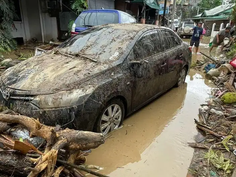Can Australia Challenge China's Rare Earth Dominance? A Deep Dive into Anthony Albanese’s Strategic Minerals Plan
- Rahaman Hadisur

- Apr 27
- 3 min read
Hadisur Rahman, JadeTimes Staff
H. Rahman is a Jadetimes news reporter covering Asia.

In the current global landscape, where economic tensions and technological ambitions collide, critical minerals have become the latest battlefield. Australia's Prime Minister Anthony Albanese has made a bold pledge: an A$1.2 billion (£580 million) investment into a strategic reserve for critical minerals, should he win the upcoming election.
What Are Rare Earth Minerals and Why Are They Important?
First, let's understand what rare earth minerals actually are. Rare earths are a group of 17 chemical elements, named "rare" not because they are scarce, but because they are difficult to extract and refine economically.
These minerals, including samarium and terbium, are the backbone of many technologies that will define the future electric vehicles, fighter jets, humanoid robots, and advanced communication systems all rely heavily on them.
Australia, a global mining powerhouse, has significant deposits of rare earths, as well as other vital minerals like lithium and cobalt. However, mining alone isn't enough it’s the refining process that turns these raw materials into high value products.
This is where China holds a significant advantage: 90% of rare earth refining happens there.
Why Is China Restricting Rare Earth Exports?
Understanding China’s motivations is key. Officially, Beijing stated that its export restrictions on seven rare earth elements were a retaliatory measure against former US President Donald Trump's 145% tariffs on Chinese goods.
However, deeper analysis suggests that China’s grip over rare earths has given it a critical strategic weapon. Between 2019 and 2022, 75% of US rare earth imports came from China, according to the US Geological Survey.
Experts argue that the US and EU "dropped the ball" decades ago, allowing China to dominate the refining sector. As Philip Kirchlechner from Iron Ore Research puts it, "China has its foot on the blood vein… of US and European defense systems."
Recent comments from Tesla CEO Elon Musk underline the threat. He admitted that Chinese restrictions are already impacting Tesla’s robot development projects, showcasing how quickly technological innovation can be disrupted.
Could Australia's Proposal Change the Game?
This brings us to the big question: Can Australia really challenge China's dominance?
Albanese’s proposal is indeed ambitious. He promises that the stockpiled minerals will serve both domestic industries and international allies, such as the US and EU. This indicates a clear strategy to become a reliable alternative to China.
Australia has already started moving in this direction:
• Arafura Rare Earths received A$840 million to develop Australia's first combined rare earth mine and refinery.
• Lynas Rare Earths recently opened Australia’s first processing plant in Western Australia.
These are strong first steps, but there’s a catch Australia still relies heavily on China for refining. Experts believe that dependency will continue at least until 2026.
Let’s take lithium as an example: although Australia mines 33% of the world's lithium, China refines 57% of it. It’s a stark reminder that mining is only half the battle; value-added processing is where the real power lies.
How Will China and the US Respond?
Interestingly, China has already tried to court Australia, criticizing Washington’s trade policies and urging Canberra to cooperate with Beijing instead. But Albanese has firmly rejected those overtures.
Analysts suggest that Australia’s plan is less about making fast profits and more about securing strategic autonomy for itself and its allies.
According to Alicia García-Herrero, chief economist for Asia-Pacific at Natixis, Australia’s proposal is "more sophisticated" than earlier strategies because it includes a flexible selling mechanism selling reserves during times of global tension to stabilize prices and undercut China's market influence.
However, she also warned that Australia alone cannot fully replace China. The bottleneck remains refining.
A Step Forward, But Not a Complete Solution
As we have seen, Albanese’s proposal to build a strategic mineral reserve is a significant and timely move. It aims to protect Australia and its partners from potential supply shocks and price manipulations orchestrated by China.
However, it’s important to recognize the limits: Australia still lacks the large scale refining capacity needed to dethrone China's dominance immediately.
In simple terms, this is a battle of resilience, not a sprint to instant victory. Australia’s move will certainly strengthen global supply chains and reduce vulnerabilities, but breaking China's rare earth monopoly will require a coordinated effort involving mining, refining, research, and innovation across multiple allied countries.
And that’s what we get to know from this article a realistic, nuanced view of Australia’s strategic mineral ambitions, and the complex global chessboard it is stepping into.










































Comments